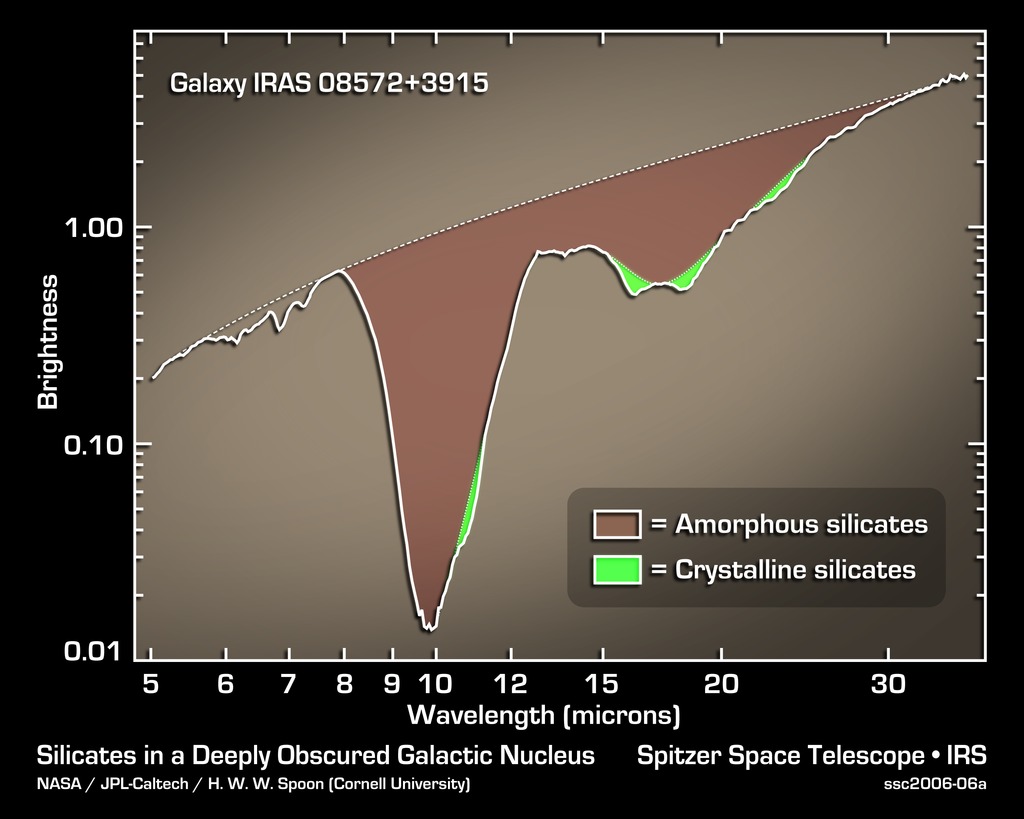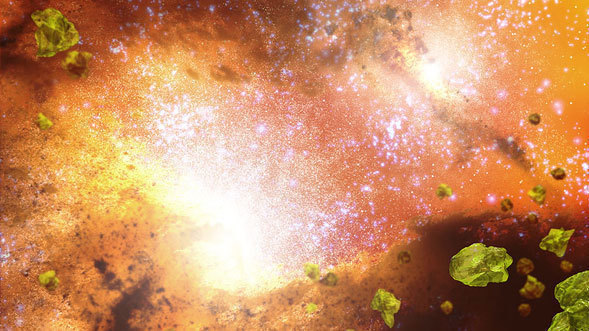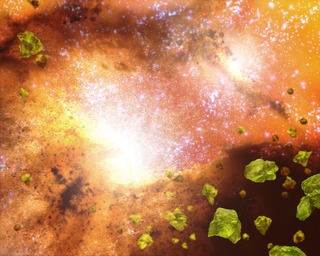
Credit: NASA/JPL-Caltech/H. W. W. Spoon (Cornell University)
Chart • February 15th, 2006 • ssc2006-06a
ssc2006-06a
This graph of infrared data from NASA's Spitzer Space Telescope tells astronomers that a distant galaxy called IRAS 08752+3915 is experiencing a storm of tiny crystals made up of silicates. The crystals are similar to the glass-like grains of sand found on Earth's many beaches.
The data were taken by Spitzer's infrared spectrograph, which splits light open to reveal its rainbow-like components. The resulting spectrum shown here reveals the signatures of both crystalline (green) and non-crystalline (brown) silicates.
Spitzer detected the same crystals in more than 20 other similar galaxies, all belonging to a class called ultraluminous infrared galaxies. These extremely bright and dusty galaxies usually consist of two galaxies in the process of smashing into each other. Astronomers believe massive stars at the hearts of the galaxies are churning out clouds of silicate crystals. This phenomenon may represent a short-lived phase in the evolution of galactic mergers.
About the Object
- Name
- IRAS 08572+3915
- Type
- Galaxy > Activity > Ultraluminous
- Distance
- 750,000,000 Light Years
- Redshift
- 0.05835
Color Mapping
| Band | Wavelength | Telescope |
| Infrared | 5.0 µm | Spitzer IRS |
| Infrared | 35.0 µm | Spitzer IRS |






